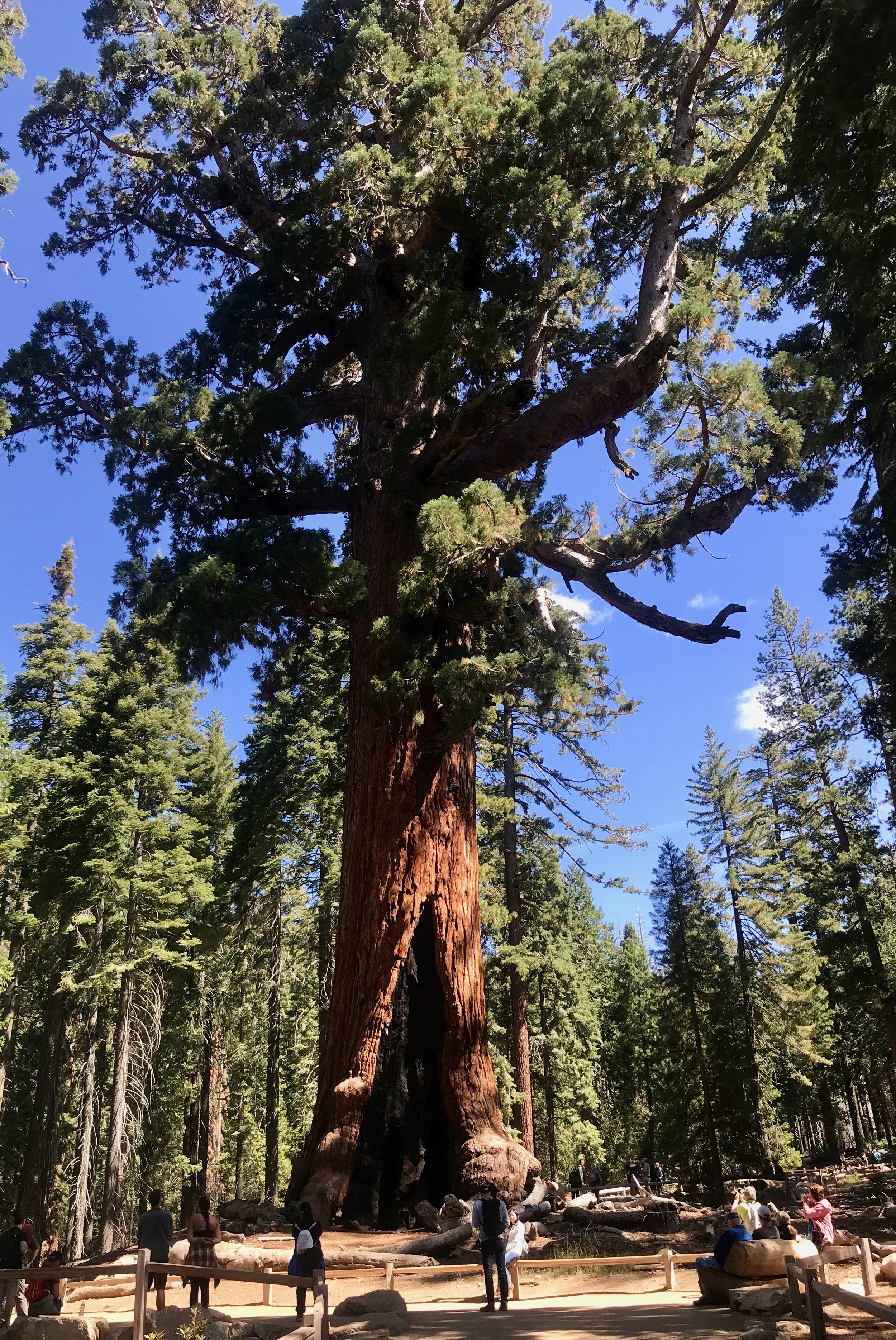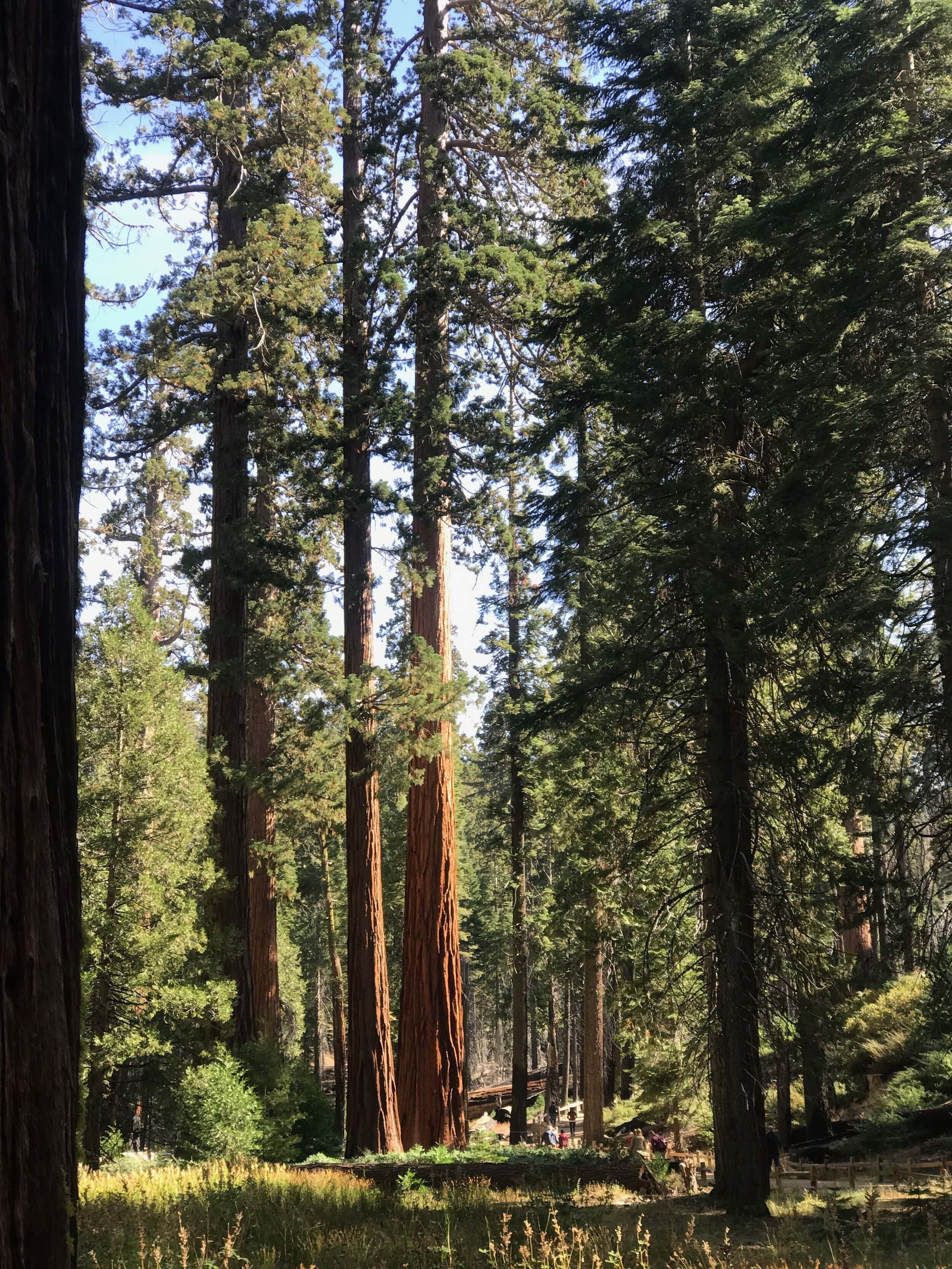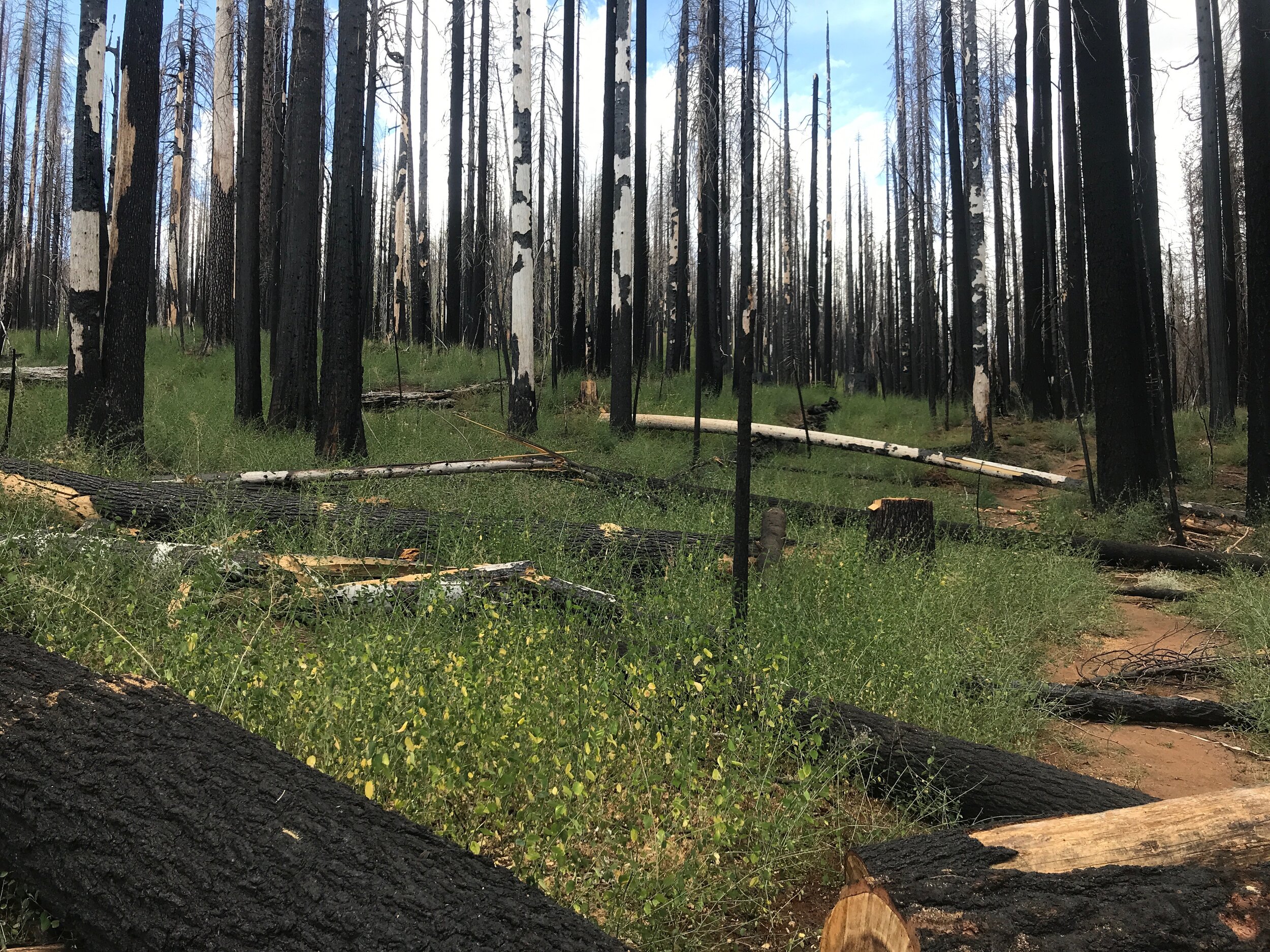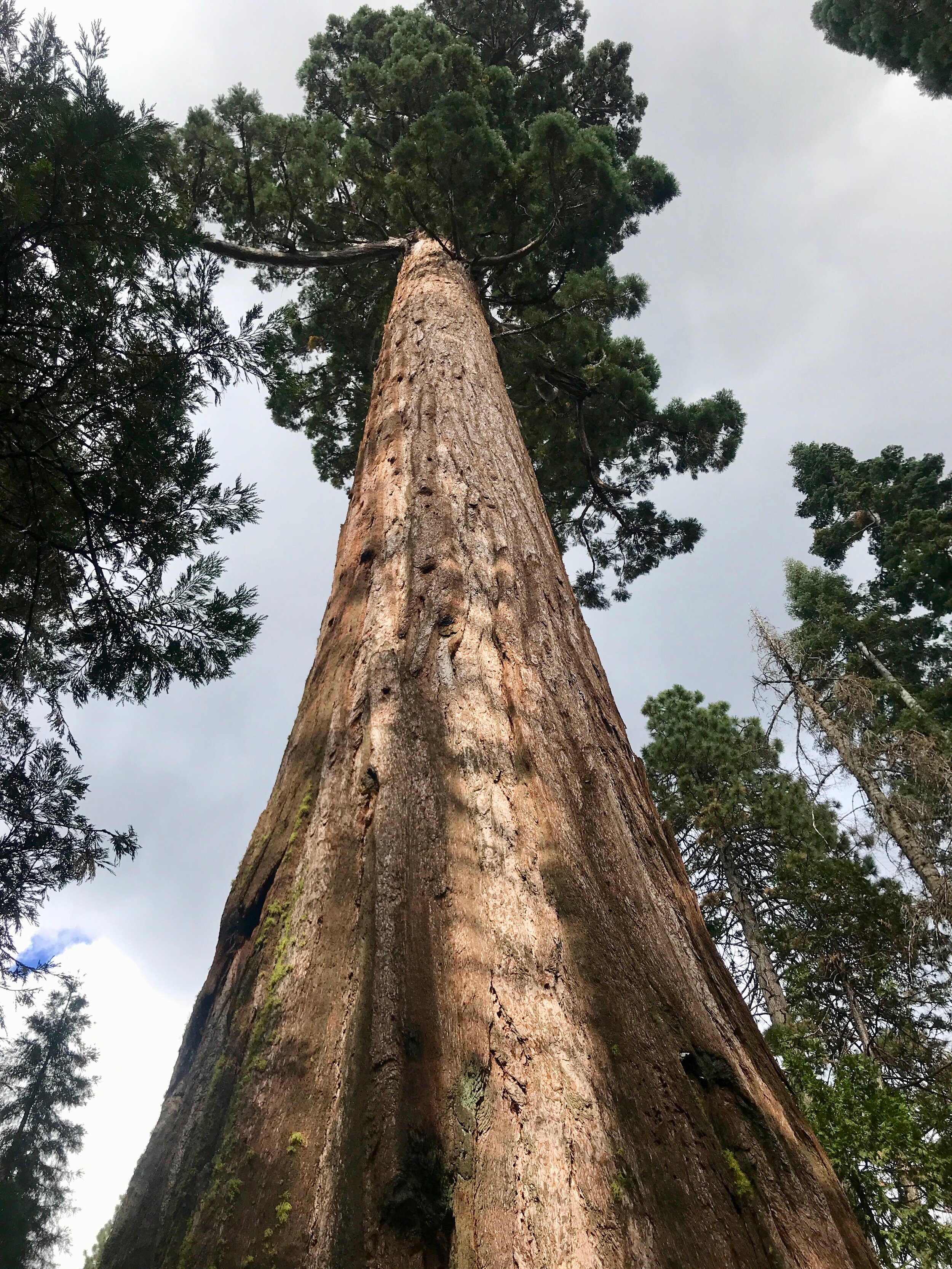Yosemite’s endangered giants
By Rick Holmes
Oct. 25, 2019
Yosemite National Park, Calif. – Giant sequoias are enormous trees in a tiny, almost perfect, niche.
They are grow naturally only here, on the west-facing slopes of the Sierra Nevada Mountains. They used to cover the continent; now they survive in 73 scattered groves, most of them on public land. They’ve thrived here for centuries, drinking up moisture from the snowpack, replenished each winter. But in the last few years they’ve grown increasingly uncomfortable.
While most conifers drop their cones seasonally, sequoias rely on Douglas squirrels to cut the cones from the branches. The closed cones require fire to open them up and release their seeds. The fires burn through the duff on the forest floor, allowing the tiny seeds to reach the soil. Low-intensity fires don’t hurt mature sequoias, but they take out smaller trees and undergrowth, giving sequoia seedlings sunshine and nutrients.
The giant sequoias dominate the forest with a grandeur that takes your breath away. They humble every small human who walks among them. Indigenous people walked here for thousands of years, treating the forest with respect. They used controlled burns to clear the meadows and the forest floor, something we now know is good for the health of the forest, and especially good for the giant sequoias.
Galen Clark first walked in the Mariposa Grove in 1853. He had come to California to search for gold, but contracted tuberculosis and was told he had six months to live. Clark came to the mountains to die, but instead found new life in this land of giants. He began spreading the news about this remarkable place and, when he saw lumber companies cutting sequoias at the nearby Nelder Grove, he determined to save them.
Clark organized a letter-writing campaign, finding sympathetic ears in Sacramento and Washington. In 1864, President Abraham Lincoln signed a law protecting Mariposa Grove and the Yosemite Valley, believed to be the first time the federal government set aside land for scenic preservation and public use.
Clark was named the first guardian of Mariposa Grove, and spent his life – he lived to the age of 95, as it turned out – guiding visitors through its wonders. In 1903, the great naturalist John Muir guided President Theodore Roosevelt through the grove, camping near the foot of “Grizzly Giant,” one of the largest trees in the world, thought to be 3,000 years old. He declared this place “a temple grander than any human architect could by any possibility build” and strengthened federal protections for the area.
That included protection from forest fires, under a misguided federal policy that made fire suppression the Forest Service’s top priority. That policy, the reaction to a wildfire in the Northern Rockies in 1910 that killed 87 people, left a century of woodlands debris on the floor of millions of acres of forests. When it catches fire, that fuel burns with an intensity that even giant sequoias can’t survive.
Two years ago, the Railroad Fire roared through 12,000 acres here, including a swath of the Nelder Grove. The popular Shadow of the Giants trail, closed to the public since that fire, now winds through a thicket of dead, blackened trunks. But the forest floor is green with new growth, including the tiny sprouts of giant sequoias.
The real threat to the sequoias moves far less quickly than a wildfire and is much harder to stop.
It takes a lot of water to sustain a tree like the Grizzly Giant, more than 200 feet tall, with a trunk nearly 100 feet around at the base. But the snowpack that replenishes the forest’s groundwater is shrinking as the temperature rises. Water now falls mostly as rain, washing quickly down the mountains instead of slowly recharging the aquifers. That, along with the draughts that hit California hard for several years, put stress on the sequoias. So did air pollution blowing east from the Central Valley, one of the country’s most polluted regions.
These mountains are so perfect for sequoias, a ranger explains, that the giant trees tend to keep growing, for thousands of years, until their sheer mass causes them to fall over. Lately though, the sequoias have begun to die while still standing, which has naturalists alarmed.
Climate change causes species to adapt. A decade ago, the Mariposa Grove was teeming with golden mantled ground squirrels, the ranger recalls. Now they’ve all but disappeared, moving to higher elevations. When your niche becomes uninhabitable, you move to a new one. Birds, mammals and insects relocate ever higher up the mountain until there’s nowhere else to climb, and then the population disappears.
But giant sequoias can’t pull up their roots and move. Their seeds don’t travel far from where they fell. There are still plenty of healthy sequoias of all ages in the Mariposa Grove, where controlled burns have kept the conditions right for tree reproduction. But as the planet warms, their days are numbered.
Don’t worry: There’s plenty of time to visit California’s giant sequoias. And even when the last of them dies, their loss may not mean much in the grand scheme of things. Scientists say earth is in the midst of its sixth mass extinction, with more than a million species projected to disappear, mostly because of the destruction humans have wrought.
Most of those dying species don’t even have names. Many of those extinctions will have grave consequences for humanity; The smallest organisms can be vital to the food chains on which we all depend. But none is as magnificent as the giant sequoias of California. If their niche isn’t secure, neither is ours.
Rick Holmes can be reached at rick@rickholmes.net. You can follow his journey at www.rickholmes.net. Like him on Facebook at Holmes & Co, and follow him on Twitter @HolmesAndCo.



